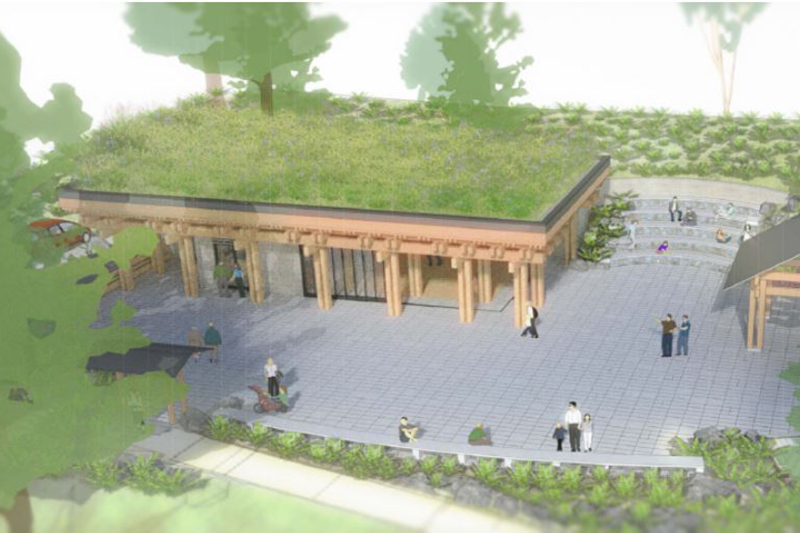
Hear the Story:
From Superfund Site to Public Park
Located on the southern shore of the entrance to Eagle Harbor, the Wyckoff Company facility on Bainbridge Island was once one of the world’s largest creosote plants. Treated wood from the site was used for some of the 20th century’s most important infrastructure projects, including wharves in San Francisco, flood control channels in Los Angeles, and the Panama Canal. By 1987, however, environmental concerns resulted in the designation of the area as a top priority Superfund site, and the property came under the control of the Environmental Protection Agency.
In July, 2001 Mayor Dwight Sutton appointed the Wyckoff Acquisition Task Force to recommend the best use of the property. After study, the Task Force delivered a “preferred alternative” to create a regional public park at the site and recommended the park be named after the late U.S. Representative Joel Pritchard, a summer resident of the Island.
A Memorial to March 30, 1942
At the same time, plans were being drawn up for the Bainbridge Island WWII Nikkei Exclusion Memorial—a collaboration between the Bainbridge Island/North Kitsap Interfaith Council and the Bainbridge Island Japanese American Community (BIJAC)—at the western edge of what would become Pritchard Park. A ceremony marking the 60th anniversary of the forced removal of Japanese Americans from Bainbridge Island took place March 30th, 2002 along Taylor Avenue, the site of the Eagledale Ferry Dock from which the removal took place.
Two Themes: Healing and Community
In February 2003 the City Council officially endorsed the name of Pritchard Park. Friends of Pritchard Park, a group consisting of community members from the Task Force, the Bainbridge Island Land Trust, BIJAC and the Pritchard family, encouraged community fundraising for the $8MM purchase. The Island’s federal and state representatives assisted in obtaining grants, while representatives and staff from the City and Parks District worked hard to get state and local funds. During the campaign to raise funds a theme evolved that this would be a healing park—a healing for two wrongs in the past: one to the social fabric of the community and constitutional rights of citizens; the second to the contamination of the land itself.
In September, 2006, 95-year-old Fumiko Hayashida, the oldest survivor of the exclusion, testified before the U.S. Congress in support of a bill to direct the National Park Service to study the site for national memorial status.
In May 2008, Congress voted to include the Memorial in the Minidoka National Historic Site as part of the Consolidated Natural Resources Act of 2008. The purchase of the lands for Pritchard Park and the Exclusion Memorial was made possible through the efforts of myriad members of the community working in collaboration with local, state, and federal government entities and private donors to secure funding and establish a safe and meaningful public resource. This grassroots effort, which has continued for 20 years of development at the Memorial, exemplifies the power of Community and the dedication to “Nidoto Nai Yoni” that makes the Exclusion Memorial such a special place.
2002
Unveiling of the Memorial Plaque
In 2002, sixty years after Bainbridge Island’s 272 Japanese Americans were unconstitutionally incarcerated, a small plaque was unveiled on the site of their departure to honor them and the memory of what was done to them. More than two dozen Nikkei were among the 500 people who listened as Governor Gary Locke, Representative Jay Inslee and others spoke of their hope that the National Park Service might soon recognize the site officially.
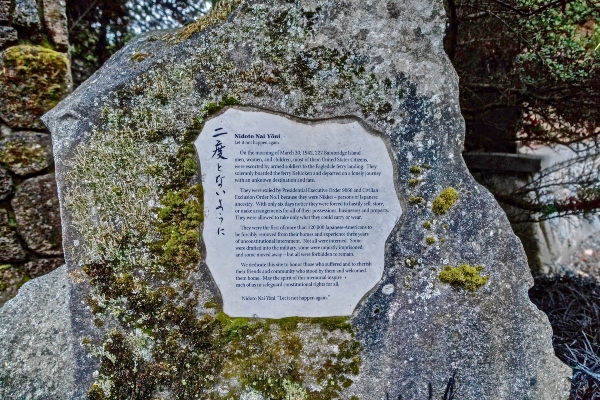
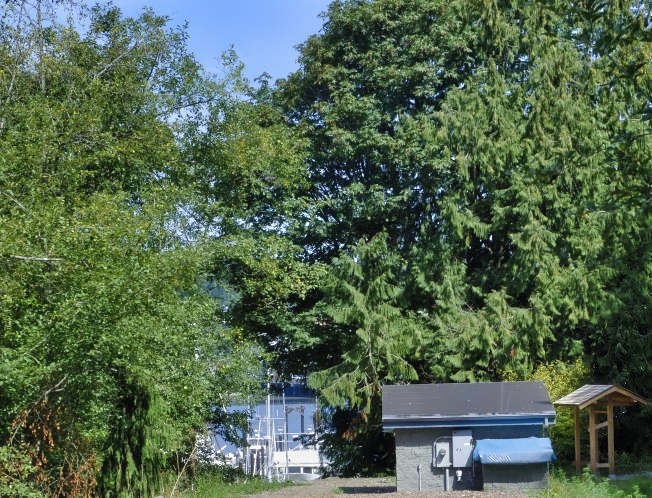
2003
Stately Cedar Added to the National Registry of Historic Trees
A large Western Red Cedar that stood near the Eagledale ferry dock as Bainbridge Islanders were forced to leave their homes in 1942—and that still stands on the site of the Memorial—was named in 2003 to the National Registry of Historic Trees by the American Forests organization. Only the second West Coast tree to earn this distinction, it is considered a living witness to an event that helped shape our nation.
2004
Dedication Ceremony
On March 30, 2004 nine local Nikkei wielded ceremonial shovels on the sixty-second anniversary of the Islanders’ journey into exile, to break the ground for the Nidoto Nai Yoni Memorial and the neighboring Joel Pritchard Park. Pritchard’s son, Frank, and former Secretary of State and Islander Ralph Munro were joined by nearly 120 people to witness the kick-off of the private fundraising effort to secure the $4 million needed to complete the first phases of the Memorial.
Click to download a transcript of Frank Kitamoto’s speech.
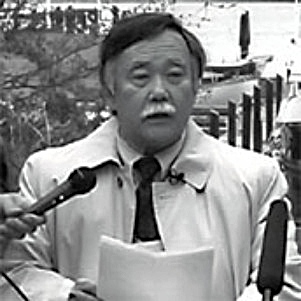
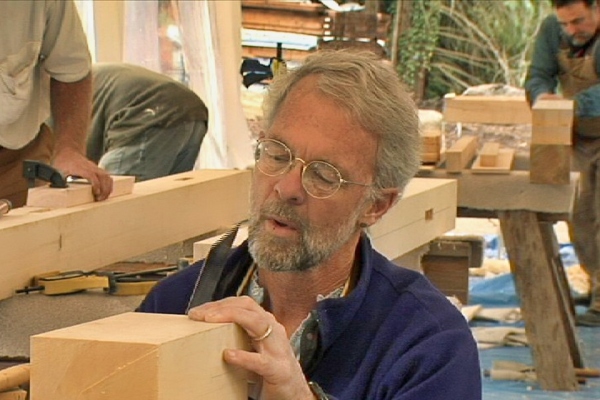
2006
Timber Framers Guild Erects the Pavilion
John Buday, a master timber framer, first approached the Memorial Committee in 2004 and offered to design and construct an entry gate, working with other volunteer members from the non-profit, educational Timber Framers Guild. The Timber Framers returned in the fall of 2006 to build two additional gates and a pavilion on the site, using clear, untreated Alaskan yellow cedar. Thirty craftsmen volunteered their time, staying and sharing meals in the homes of local people, and enjoying the camaraderie of working together on a meaningful project. Traditional timber framing techniques were used as before, creating graceful and lasting structures. John Buday of Cascade Crest Designs designed both gates and the pavilion.
2008
Designation as a National Historic Site
“I thought nobody cared. I’m very happy. I hope I live to see it done.” That joy was shared by the more than 200 people who came together at the Memorial site on March 30, 2007, to commemorate the sixty–fifth anniversary of the exile of the Island’s Japanese Americans. The words are those of Fumiko Hayashida, at 96 the Island’s oldest survivor of the incarceration. She testified in 2006 before a congressional committee in support of a bill, sponsored by Representative Jay Inslee and eventually passed by a 419-0 vote in the House of Representatives, that would grant National Park Service (NPS) status to the Memorial. In 2008 the Senate passed similar legislation, President Bush added his signature, and the Nidoto Nai Yoni Memorial is now part of the NPS. Fumiko Hayashida and the others who were unjustly imprisoned now know that many, many people care.
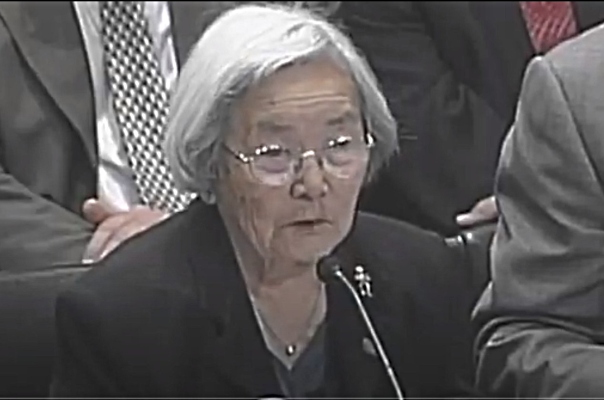
Courtesy of Stourwater Pictures
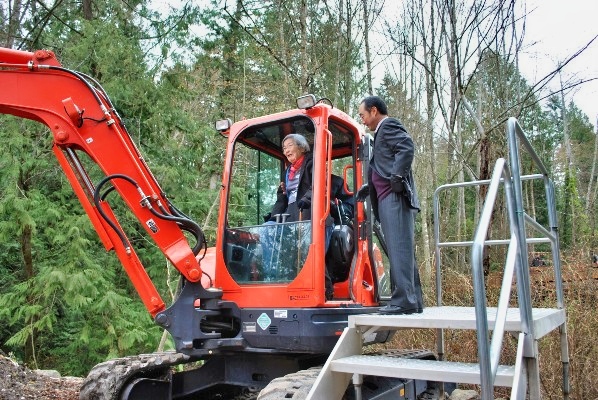
2009
Groundbreaking for the Memorial Wall
At 11:03 a.m. on Monday, March 30, 2009, the oldest surviving Bainbridge Island Japanese American, 98-year-old Fumiko Hayashida joyfully stood in the cab of a construction backhoe as it broke ground for the long-awaited “Story Wall” for the Bainbridge Island Japanese American Exclusion Memorial.
2011
Dedication of the Memorial Wall
Close to 600 visitors attended the hour-long ceremony on August 6, 2011. Speakers addressed the history of the Bainbridge Island exclusion experience, the creation of this Memorial, the healing this Memorial hopes to foster, and the honor it will bring to this community. Sallie Maron, President of the Bainbridge Island Japanese American Exclusion Memorial Association (BIJAEMA), summarized what this Memorial represents.
Dedication Speech
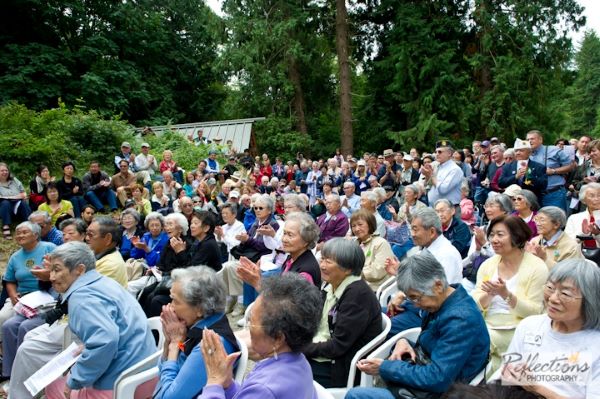
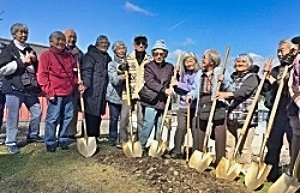
2018
Groundbreaking for the Departure Deck
Survivors bearing golden shovels break ground for the new Exclusion Departure Deck. (l-r): Reiko Kino Nishida, Lilly Kitamoto Kodama, Shinchi Tonooka, Yasuko Hayashida Mito, Tomi Hayashida Egashira, Junji Yukawa, Eiko Suyematsu Shibayama, Hisa Hayashida Matsudaira, Mystery Survivor, Frances Kitamoto Ikegami, Hiro Hayashida, Victor Takemoto, Kay Sakai Nakao.
2021
Dedication of the Departure Deck
In March, 2021, the long-awaited Departure Deck was unveiled in a small ribbon-cutting ceremony in the shadow of COVID attended by many of the same survivors who attended the groundbreaking. For the first time, visitors are invited to share the view that 227 islanders saw on March 30, 1942 as they stepped onto the ferry dock, bringing only what they could carry to an unknown destination for an indeterminate length of time.
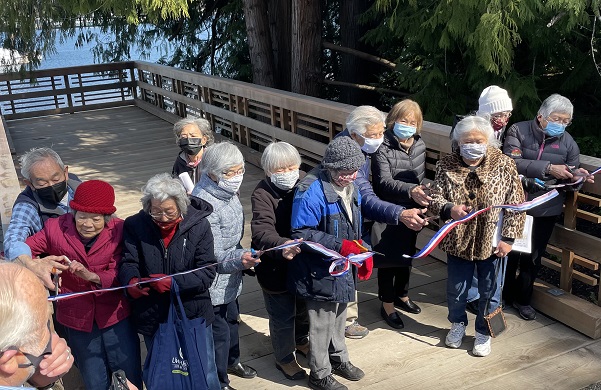
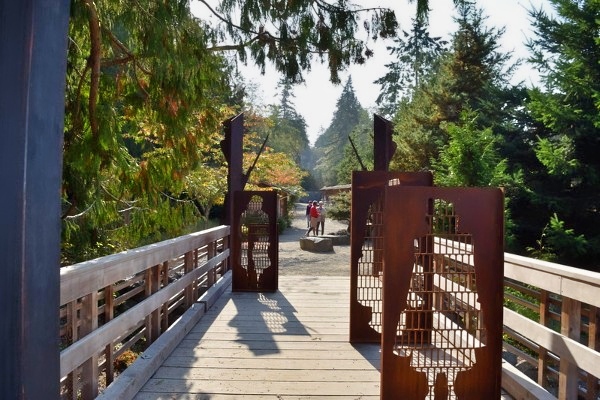
2022
Dedication of Departure Deck Interpretive Artwork
In September, 2022, members of the community gathered to hear local dignitaries speak at the dedication of interpretive artwork created by artists Anna Brones and Luc Revel. Visitors appreciate the storytelling and symbolism embedded in the life-size weathered metal sculptures that depict the humanity of departing islanders and the inhumanity of their numbered tags. The installation is punctuated by an imposing gate designed by John Buday.
2023
Fundraising for the Final Phase of the Memorial
The final planned phase of development for the Memorial, the Visitor Center, was submitted to the City of Bainbridge for permitting in September of 2023. Significant funding has been secured through federal, state, and local government and private foundations and donors. A capital campaign launched in October of 2023 and will run through 2024, or until funding goals are met.
